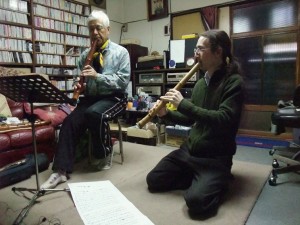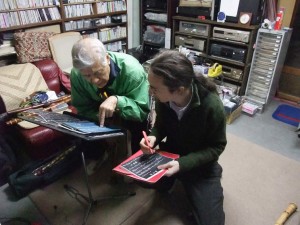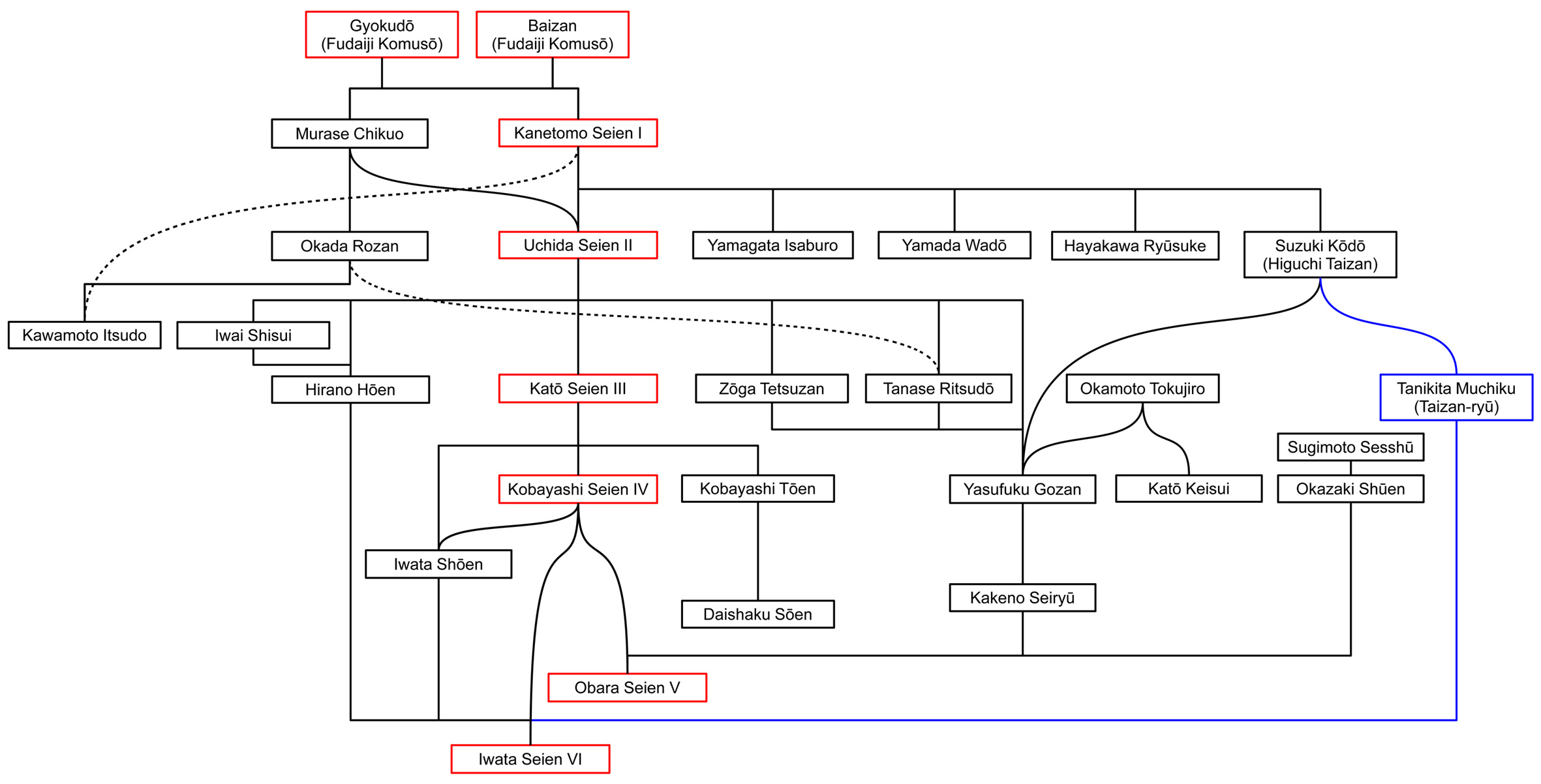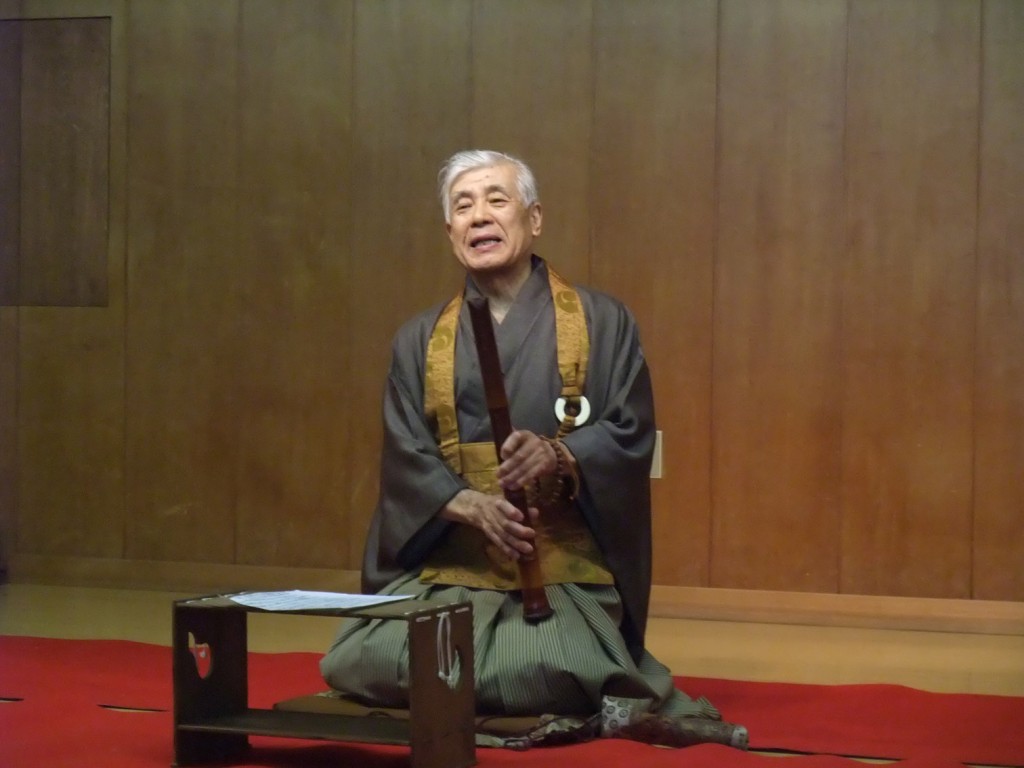The honkyoku of Seien Ryu are the original honyoku of Fudaiji temple, and were transmitted to Kanetomo Seien, the founder of the school, by the two Fudaiji komuso Gyokudo and Baizan. The home of Seien Ryu is Nagoya, which is not far from the original Fudaiji temple (sadly no longer existing) in Hamamatsu. It is a very rare style, seldom heard outside of Nagoya.
The honkyoku repertoire consists of 11 pieces, which have become well known largely through Suzuki Kodo (later called Higuchi Taizan), a student of Kanetomo Seien who left to Kyoto where he made his own school, Taizan Ryu (also known as Taizan Ha, Myoan Ryu or Meian Ryu). Taizan also studied and taught pieces from Kinko Ryu, as well as some from Oshu and Kyushu, and included the Seien Ryu honkyoku as the basis for his school’s repertoire, though his school’s playing of these pieces has become stylistically different from Seien Ryu. From Taizan’s school, these pieces spread across Japan, into the schools of Takahashi Kuzan, Jin Nyodo and Watazumi among others, and remain among the most popular honkyoku today.
While these schools are more often heard, the original Seien Ryu school continues in Nagoya and the surrounding area, with its repertoire of both honkyoku and ensemble music characteristically different from the other shakuhachi schools, as well as the honkyoku repertoire being taught by Justin in England and his student Jon Kypros in the US.
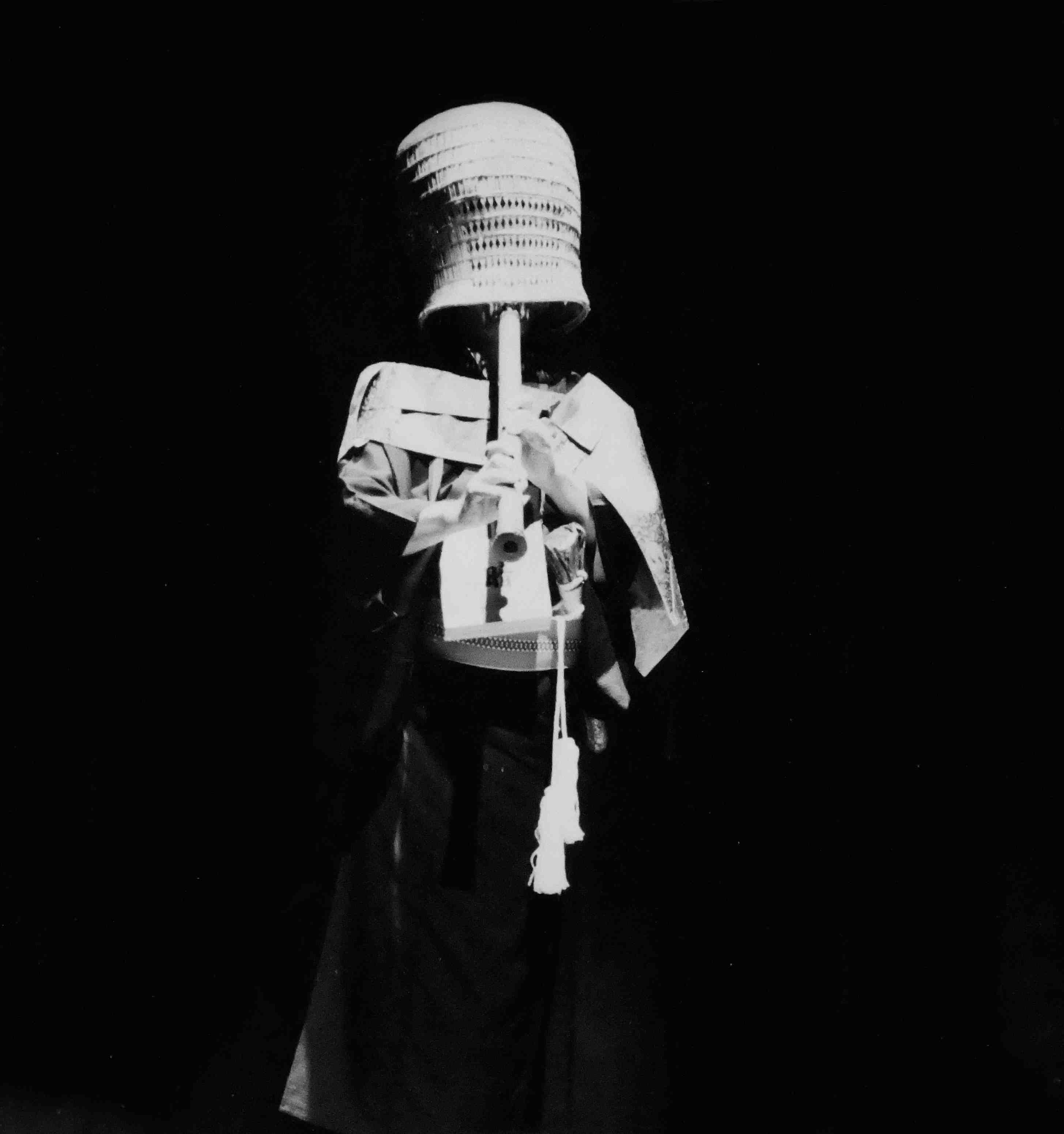
Iwata Seien, iemoto of Seien Ryū
Justin’s teacher for Seien Ryu is the 6th Seien Ryu iemoto (head of the lineage), Iwata Seien, from whom he learned the complete Seien Ryu honkyoku repertoire, and by whom he was authorised to teach the repertoire. Iwata-sensei had a number of teachers. He studied from his father, who studied the honkyoku directly from the 3rd iemoto, and from his father’s first teacher Kobayashi Seien IV. He also studied from Hirano Houen who was a student of the 2nd iemoto, and under encouragement of Kawase Junsuke I, went to Kyoto to study the Taizan Ryu repertoire under Tanikita Muchiku, Higuchi Taizan‘s student.
Seien Ryu Lineage Chart
Teaching
Due to the historic importance of Seien Ryu – it being one of the few old temple lineages remaining; and one of the major schools to have affected so many of the newer styles which have adopted pieces from its repertoire – as well as its direct and relatively easily accessible style, Justin generally starts his students’ tuition with this style. This repertoire gives an excellant basis of good technique, and while it can be introduced even at the very beginning of shakuhachi study, it can also be taken to great depth and refinement.
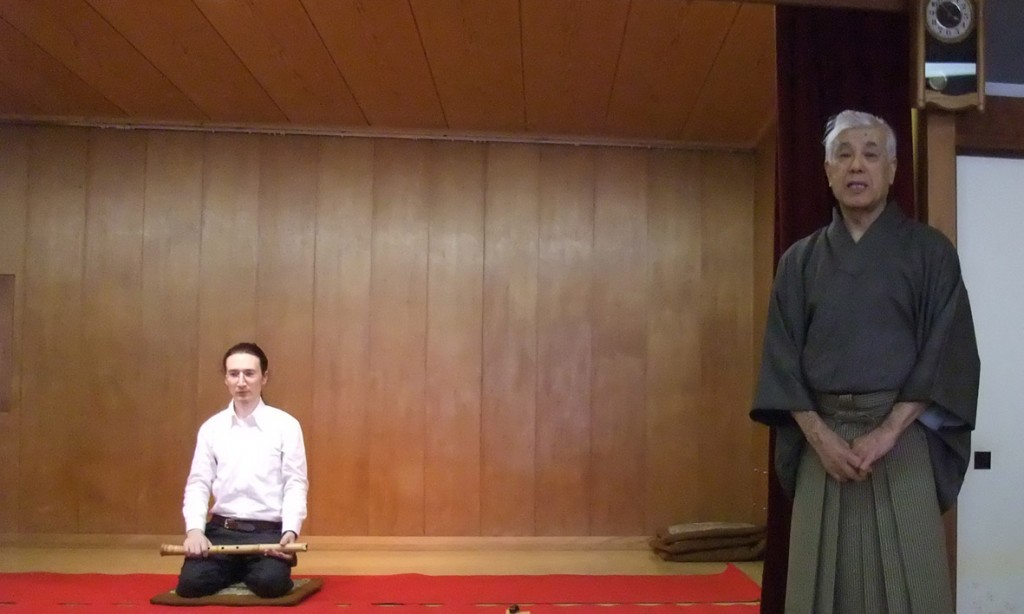
Justin’s Seien Ryū honkyoku performance introduced by Iwata Seien in annual Seien Ryū gathering, 2010
Justin writes:
“To study these pieces in the original Seien Ryu style from which they came has been very valuable for me, both for playing them in that older style, and also to deepen my understanding of the arrangements of these pieces which I have already studied from the other lineages. Due to the popularity of the various newer arrangements of the pieces, the original Seien Ryu style is today extremely rare, and almost unknown outside of its home in Nagoya. Although I also love to play and hear the versions I have learned from other lineages, there is a great austerity and purity in the original Seien Ryu pieces which I deeply appreciate and enjoy.”

